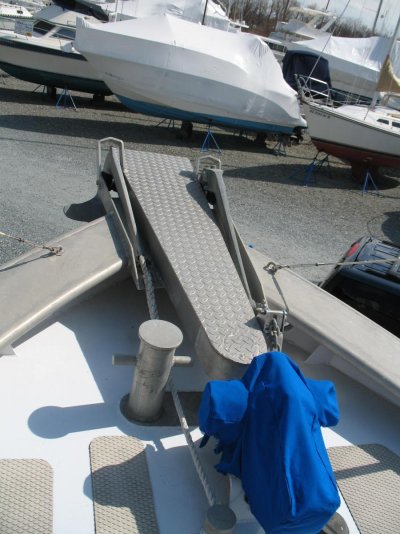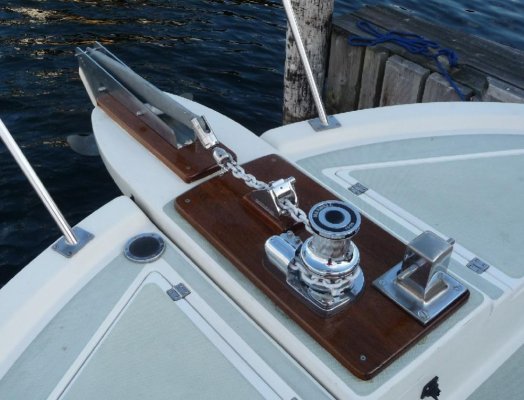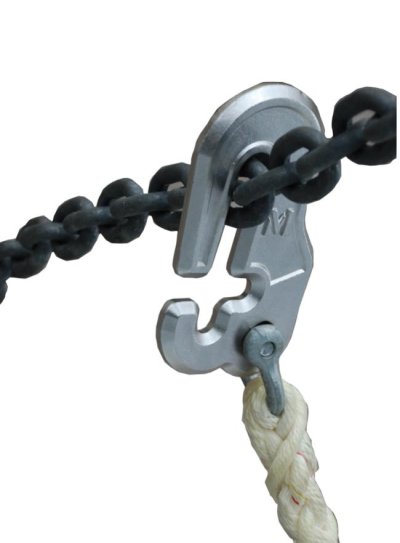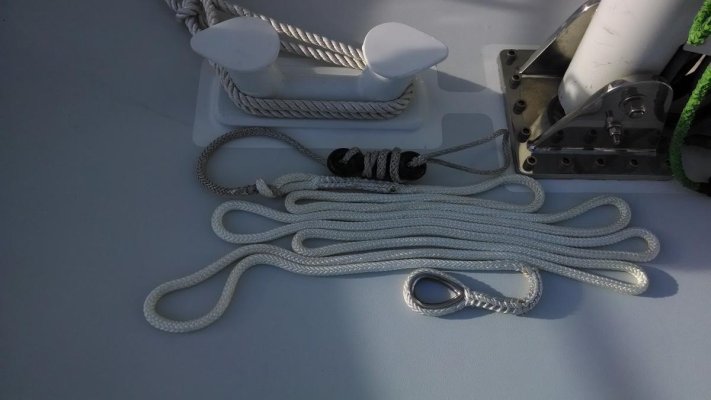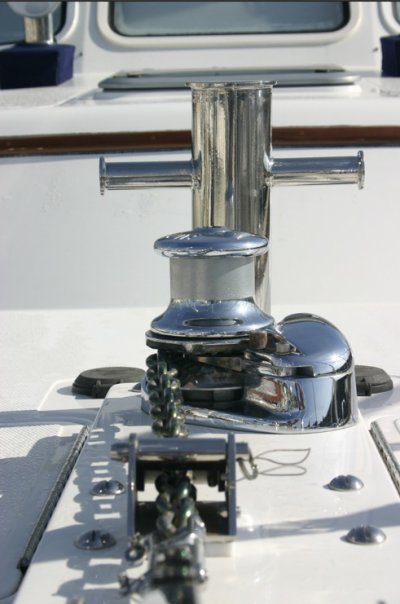Hi Kevin.
I am a bridle fanatic!
Having tried many different combinations my current setup has proven to be the best so far and is the same setup I used on my 4788, and we spend a lot of time on the pick.
The thing is imho, you want a bridle setup that does not use your bow roller setup at all ...especially with all chain, the reason is that even with plenty of rode out you will definitely shock load your bow roller, bow sprit and likely damage your roller or spread your roller mounting at some stage. I have done all the above. 4788's tend to sail around on the pick as much or more than any cruiser and at times you can and will tug hard on your roller and windlass and its noisy and chain has no give in it at all!
So you need to use your deck cleats on both sides to attach your bridle. This takes all load of your windlass as per manufacturers specs require. This also gives you a quiet nights sleep in your forward cabin with no chain grumble on the roller, plus theoreticly ( I don't believe I though) should slow down the yawing at anchor.
My setup consists of simple chain hook, cheap and strong, some shakles to attach lines. I use 18mm nylon mooring lines with built in rubber shock cord sections, this gives a beautiful soft load to the boat when it loads up on the bridle when swinging at anchor even in 35 knots of wind, I know this as I have been in these conditions for days at a time and I was amazed how much load this bridle could handle and how well it controlled the boat.
I have had failures, I always carry spare bridle lines so if needed I could double up, and they wear out so you don't want a failure when its blowing hard.
Other failures include the what I call the "lunch" bridle. That's the one when you simply attach the bridle to the chain (usually with a weak snap clip arrangement) and feed it out with the chain and then cleat it off and let more chain out to take the load off the chain. Problem is the chain and the bridle rope are all still going over the roller, still noisy, still has more shock load , often the bridle ropes then have to travel across your deck to get the cleats at the sides, this can and often does cause chafing at tha bow hawser etc..this system is easier to deploy but always lets you down when you really need it, in my experience.
The problem with the best bridle system is that its harder to get the knack of setting it up.
This my procedure. Having anchored securely ,remember that by the time you deploy your bridle you may end up letting out up to (in my case)another 5 meters of rode, so I factor that in as bonus rode.
Then I attach one side of my bridle to one forward cleat so it can be thrown over the rail ( you learn how much to put out) then I take the rest of the bridle right around the front of the boat and cleat the other side..then the hard part. You have to dangle your hook down to the now tight anchor chain and get to hook between the chain links.
This can be a pain in the a but sometimes it goes straight on sometimes not, I cannot find an easy way to this, if you have slack in the chain you can lift some with a good boat hook then manually hook it on but usually just dangle and wiggle and it will slip on.
Then KEEP TENSION ON THE BRDLE so the hook cant fall off while you let out more chain until the boat is hanging on the bridle with the chain just loose to the windlass.
With this setup you will find that the angle of the rode is lower so better angle of attack, imo, no load on windlass, no noise from chain at night, no shock loading ever and a nice ride on the pick.
Hope this helps
Regards Andrew
PS Kevin my water maker is working but the auto salt sensor from PUR is not allowing water through..I think I will get rid of it and go direct to tank after taste test.
Sorry cant attach pic as the system wont let me browse to it in attachments

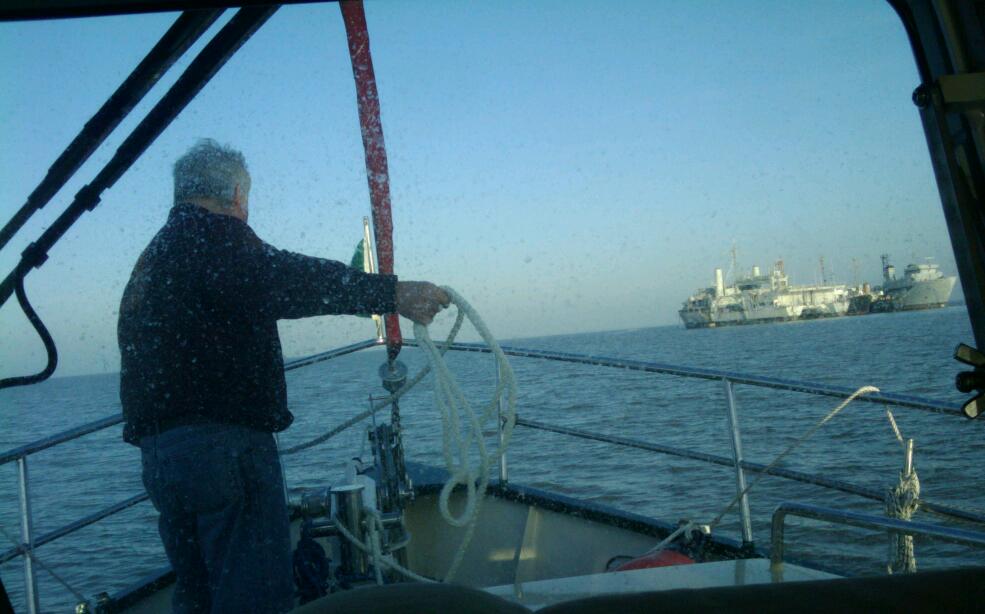

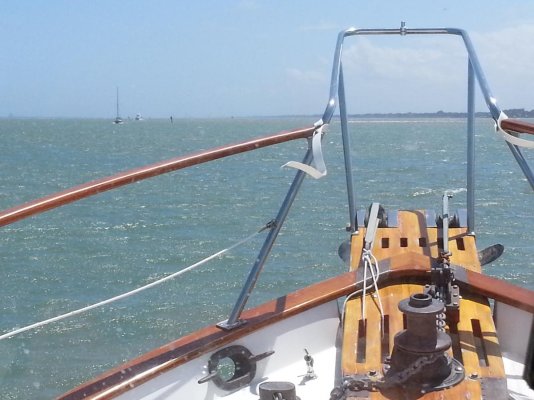
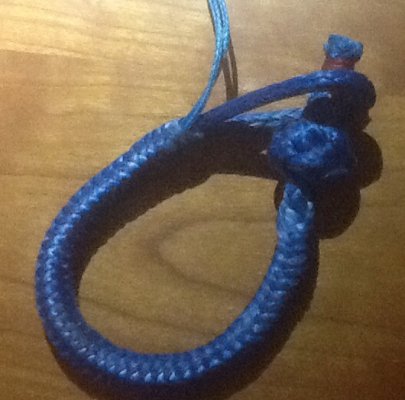
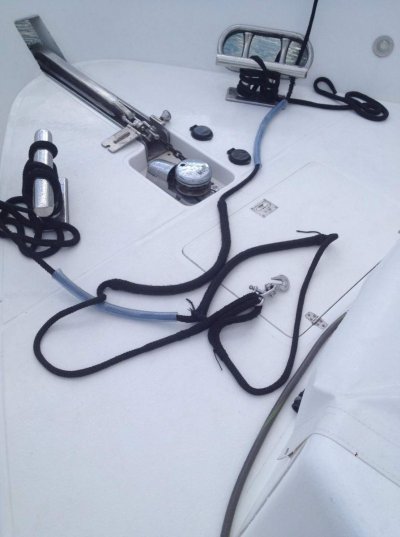
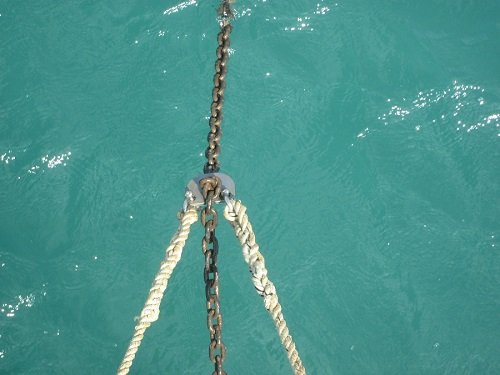
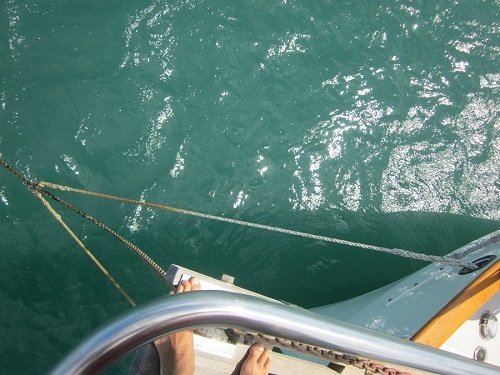
 There are only about 6 or 8 ways to do this right. Kevin, welcome to the don't worry be happy" all chain rode club.
There are only about 6 or 8 ways to do this right. Kevin, welcome to the don't worry be happy" all chain rode club.
